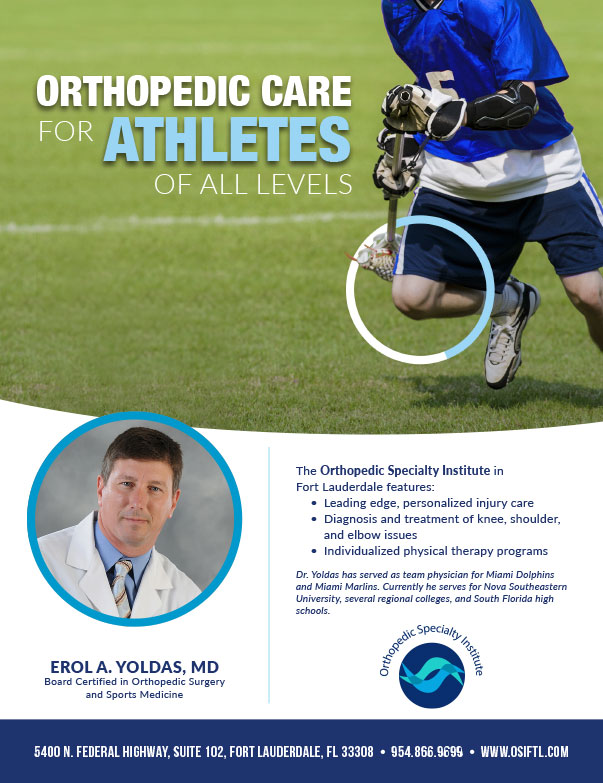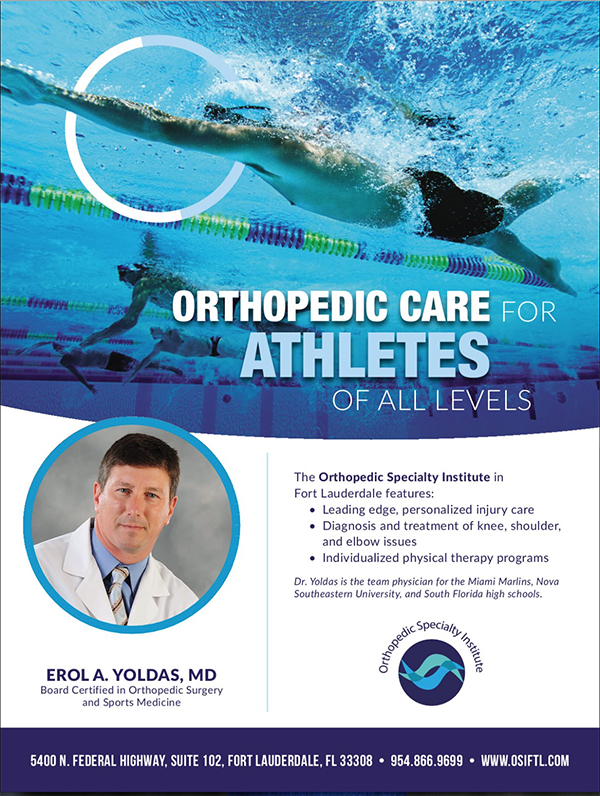
OSI specializes in the treatment of a wide variety of knee injuries and conditions. We now offer Same Day Appointments! Please call our office to schedule at 954-866-9699 or make an appointment online!
The news reports of sensational recovery after an athletic injury have been increasingly commonplace. What was once a career-ending knee injury twenty or thirty years ago is now often treatable and may allow a full return to one’s level of sports participation. The most dramatic revolution in the treatment of athletic injuries has been the emergence of orthopedic surgeons involved in Sports Medicine; physicians dedicated to the understanding and treatment of the injuries to athletes. Development of the arthroscope, or “scope,” was the single most important technological breakthrough in the treatment of these injuries. It has enabled orthopedists to evaluate and treat many conditions with much less trauma to the injured joint.
Although one frequently reads about “cartilage tears” in the newspaper, most people have some questions regarding the anatomy of the knee and how the injuries are treated. A joint is where two bones meet to allow motion. The knee joint is essentially made of two bones, several ligaments, and two types of cartilage. The bones are the end of the femur (the thigh bone) and the top of the tibia (the leg bone). These bones roll upon each other somewhat like a hinge. The shape of the bones is very specific to allow the motion necessary to run, jump, and pivot during activities. The bones are held together by bands of tissue which resemble “ropes”. These are called the ligaments. They help control the motion between the bones. The tendons are simply the extensions of the muscles that attach to the bone to allow the muscle contractions to bend and straighten the knee.


